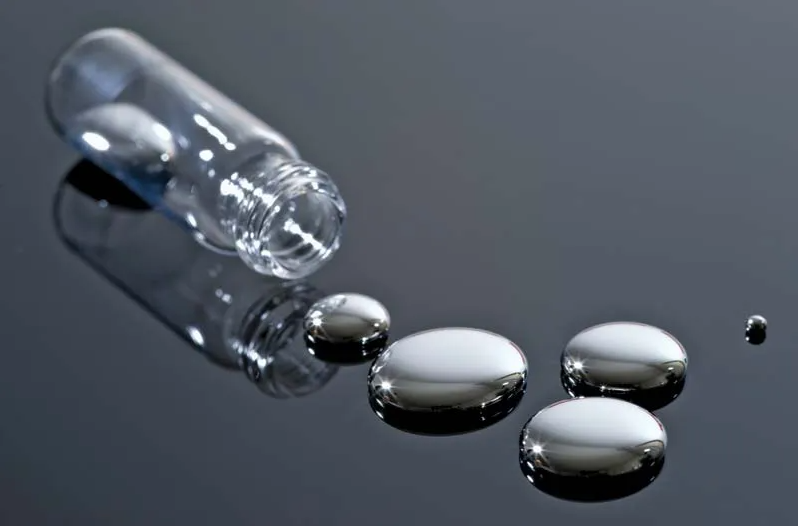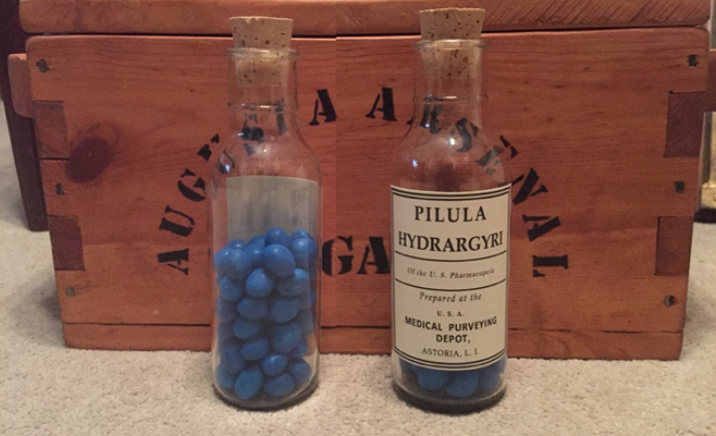 There’s nearly unanimous agreement among historians that Abraham Lincoln, the 16th President of the United States, was America’s greatest leader. Honest Abe, as he was affectionally called, served in the nation’s highest office from 1861 until his assassination in 1865. During that time of civil war, Lincoln’s guidance held the union together, and he worked towards the emancipation of slaves. But despite Lincoln’s reputation of calmness under stress, there was a dark side to him. Abraham Lincoln was known for his unpredictable fits of rage.
There’s nearly unanimous agreement among historians that Abraham Lincoln, the 16th President of the United States, was America’s greatest leader. Honest Abe, as he was affectionally called, served in the nation’s highest office from 1861 until his assassination in 1865. During that time of civil war, Lincoln’s guidance held the union together, and he worked towards the emancipation of slaves. But despite Lincoln’s reputation of calmness under stress, there was a dark side to him. Abraham Lincoln was known for his unpredictable fits of rage.
Abraham Lincoln was not a well man during most of his adult life. It’s documented that Lincoln suffered from what was then known as hypochondriasis—the 19th-century term for paranoia and melancholia. Today, he’d likely be diagnosed as having manic-depressive disorder or, at least, experiencing clinical depression. Lincoln’s symptoms included gastrointestinal discomfort, headache, fatigue, fever, chills, insomnia, anxiety, hypervigilance, forgetfulness, immense sadness or despair, and uncontrollable mood swings including maniacal laughter as well as those unpredictable fits of rage.
At one congressional debate in the 1850s, Lincoln lost it and grabbed an opponent by the throat, shaking him so violently that the man’s teeth chattered. In the beginning of his presidency, White House staffers feared Lincoln’s rath which seemed to come from nowhere. Remarkably, though, after five months in the Commander-in-Chief’s chair, Abraham Lincoln suddenly changed. For the rest of his days, he was the picture of calm and control.
It’s well known, historically, that President Lincoln was medicated for his ills. His main prescription was for a common-at-the-time pharmaceutical called Pilula Hydrargyri or Blue Mass. Blue Pills, as the drug was also known, were prescribed for a wide range of ailments from diarrhea to childbirth pain. And it was the go-to pill for treating melancholy.
Abraham Lincoln stopped taking Blue Mass, or Blue Pills, after five months in the Oval Office. He said they were “making him cross”. No doubt they were, as Lincoln was a changed man when he got off his meds. Let’s look at who this remarkable person was, his feats as President, and find out just what was inside those little blue pills.
Abraham Lincoln was born on February 12, 1809, in a Kentucky log cabin. His family were dirt-poor, and Lincoln had little formal education. He was kicked in the head by a horse when he was nine and nearly died. He also suffered serious injuries by being clubbed unconscious during a robbery, nearly severing a thumb with an axe, experiencing severe frostbite on both feet, and breaking an arm.
Abe Lincoln was an unusual-looking adult—tall and gaunt. He was 6’ 4” and weighed 150-160 lbs. Lincoln had a notably drooping eye and disproportionate limbs. Some speculate he had a rare genetic disorder called Marfan Syndrome which could have accounted for his deformities.
Although Lincoln had little schooling, he was far from uneducated. He was a self-taught man and a true life-long learner. He’d moved to Illinois in 1830 where he self-studied law and passed the state bar exam in 1836, setting up a practice in Springfield.
Politics called for Abraham Lincoln in 1847 when he was elected to one term in the U.S. House of Representatives. He was defeated for a second term and went back to practicing law. Lincoln became politically active again in the mid-1850s and gained fame with an outstanding performance in what’s known as the Lincoln-Douglas Debates.
Abraham Lincoln lost his bid for the Vice Presidency in the 1856 general election. Defeat didn’t stop Mr. Lincoln, and he was elevated to the Office of President of the United States of America in 1860. His official inauguration was on March 4, 1861. In two months, the American Civil War would break out.
Lincoln experienced extreme sadness and grief during his life. His beloved mother died when he was twelve. The same year, he lost his affectionate aunt and uncle. His first wife died unexpectedly, and two of the four boys he had with his second wife, Mary Todd Lincoln, died in their childhood.
Lincoln’s law partner, John Todd Stewart, described him as “an unfortunate and miserable man… the most striking picture of dejection I have ever seen.” Lincoln self-assessed in a preserved letter. It read:
I am now the most miserable man living. If what I feel were equally distributed to the whole human family, there would not be one cheerful face on the earth. Whether I shall ever be better I cannot tell; I awfully forbode I shall not. To remain as I am is impossible; I must die or be better, it appears to me. I have been driven many times to my knees by the overwhelming conviction that I had nowhere else to go.
John Todd Stewart is on record that Abraham Lincoln was prescribed Blue Mass for his depression as early as 1841 when Lincoln was thirty-two. It’s not known if this was daily for the next twenty years but Lincoln, himself in his diaries, recorded that he stopped ingesting the pills in August of 1861 at age fifty-two. This was right at the time Lincoln made the momentous decision to sign the Confiscation Act that seized Confederate possessions including slaves and when his most capable soldier, General Nathaniel Lyon, was killed in battle.
In sobriety, Abraham Lincoln executed his duties of the Office of the President in exemplary fashion. He became a figurehead of calm reason—a man of vision and calculation—who inspired others to fight on and win the solidarity of the union as well as being instrumental in freeing America’s enslaved. Tragically, The Great Emancipator was assassinated on April 15, 1865. The Gettysburg Address is one of his legacies.
It’s far more than a coincidence that Abraham Lincoln’s emotional condition improved, or stabilized, when he stopped taking the Blue Mass pills. That’s well recorded and was observed by all those working with Lincoln or folks being familiar with the man. This leads to the logical question of just what was in those little blue pills that were making President Lincoln sick.
The ingredients of Pilula Hydrargyri or Blue Mass pills were no secret. They were well-known back in Lincoln’s day. Here’s the recipe posted in Medical Histories of the Union Generals:
- 33 Parts Mercury
- 5 Parts Licorice
- 25 Parts Althaea
- 3 Parts Glycerine
- 34 Parts Rose Honey
33 Parts Mercury? Hold on. Mercury is a heavy metal that’s toxic to human beings when ingested and metabolized by the system. According to the Environmental Protection Agency (EPA), “Mercury exposure at high levels can harm the brain, heart, kidneys, lungs, and immune systems in people.”
All the symptoms Abraham Lincoln presented—gastrointestinal discomfort, headache, fatigue, fever, chills, insomnia, anxiety, hypervigilance, forgetfulness, immense sadness or despair, and uncontrollable mood swings including maniacal laughter as well as those unpredictable fits of rage—were consistent with side effects from mercury poisoning.
Here’s more information from the EFA about mercury:
Mercury is a naturally occurring chemical element found in rock in the earth’s crust, including in deposits of coal. On the periodic table, it has the symbol “Hg” and its atomic number is 80. It exists in several forms:
- Elemental (metallic) mercury
- Inorganic mercury compounds
- Methylmercury and other organic compounds
Elemental (Metallic) Mercury
Elemental or metallic mercury is a shiny, silver-white metal, historically referred to as quicksilver, and is liquid at room temperature. It is used in older thermometers, fluorescent light bulbs, and some electrical switches. When dropped, elemental mercury breaks into smaller droplets which can go through small cracks or become strongly attached to certain materials. At room temperature, exposed elemental mercury can evaporate to become an invisible, odorless toxic vapor. If heated, it is a colorless, odorless gas.
Elemental mercury is an element that has not reacted with another substance. When mercury reacts with another substance, it forms a compound, such as inorganic mercury salts or methylmercury.
Inorganic Mercury
In its inorganic form, mercury occurs abundantly in the environment, primarily as the minerals cinnabar and metacinnabar, and as impurities in other minerals. Mercury can readily combine with chlorine, sulfur, and other elements, and subsequently weather to form inorganic salts. Inorganic mercury salts can be transported in water and occur in soil. Dust containing these salts can enter the air from mining deposits of ores that contain mercury. Emissions of both elemental or inorganic mercury can occur from coal-fired power plants, burning of municipal and medical waste, and from factories that use mercury. Inorganic mercury can also enter water or soil from the weathering of rocks that contain inorganic mercury salts, and from factories or water treatment facilities that release water contaminated with mercury.
Although the use of mercury salts in consumer products, such as medicinal products, have been discontinued, inorganic mercury compounds are still being widely used in skin lightening soaps and creams. Mercuric chloride is used in photography and as a topical antiseptic and disinfectant, wood preservative, and fungicide. In the past, mercurous chloride was widely used in medicinal products, including laxatives, worming medications, and teething powders. It has since been replaced by safer and more effective agents. Mercuric sulfide is used to color paints and is one of the red coloring agents used in tattoo dyes.
Human exposure to inorganic mercury salts can occur both in occupational and environmental settings. Occupations with higher risk of exposure to mercury and its salts include mining, electrical equipment manufacturing, and chemical and metal processing in which mercury is used. In the general population, exposure to mercuric chloride can occur through the dermal route from the use of soaps and creams or topical antiseptics and disinfectants. Another, less well-documented, source of exposure to inorganic mercury salts among the general population is from their use in ethnic religious, magical, and ritualistic practices and in herbal remedies.
Methylmercury
When inorganic mercury salts can become attached to airborne particles. Rain and snow deposit these particles on land. Even after mercury gets deposited on land, it often returns to the atmosphere, as a gas or associated with particles, and then redeposits elsewhere.
As it cycles between the atmosphere, land, and water, mercury undergoes a series of complex chemical and physical transformations, many of which are not completely understood. Microscopic organisms can combine mercury with carbon, thus converting it from an inorganic to organic form. Methylmercury is the most common organic mercury compound found in the environment and is highly toxic.
So, if mercury is primarily used for industrial purposes and is highly toxic in human consumption, where did the idea come from to make it into medicine and poison someone like Abraham Lincoln? No one seems to know who first thought of swallowing little blue pills made with quicksilver, but the practice has been around a long time. Literature from the early 1800s recommends the generic name Blue Mass as a treatment for dysentery, constipation, syphilis, gonorrhea, melancholia, worms, tuberculosis, toothache, and more.
Here’s a quote: To be fair, it was probably equally effective for all those diseases… which is to say not effective at all for any of them.
And here’s some mercury poisoning trivia: Hat makers often suffered from the same syndrome as Lincoln. Constant exposure to a mercury compound used to treat felt hats gave them violent mood swings, inspiring the Mad Hatter in Lewis Carroll’s Alice in Wonderland.
Blue Mass pills have been off the market for decades. (By the way, the blue color came from blue chalk that was used as a buffing agent to help bind the mercury to the other ingredients.) No pills were thought to exist that could be analyzed by a modern forensics laboratory to determine the exact mercury content, or weight in each pill, which could show how over-medicated (read that as over-intoxicated) someone like President Lincoln would’ve been.
That was until a retired physician and medical historian, Norbert Hirschhorn, dug into the Lincoln case. Dr. Hirschhorn and the Royal Society of Chemistry struck gold—actually, quicksilver—in a medical museum. There, in a nicely crafted wooden box, were two vials marked Pilula Hydrargyri. Inside were a bunch of little blue pills.
Dr. Bin Chen, Senior Applications Chemist at PS Analytical in Kent, England, carried out a test on the Blue Mass pills. He found each contained 33.6% mercury in ground amounts that could easily be absorbed into a human body. Every pill contained 750 micrograms of elemental mercury—far above the EPA’s long-term mercury tolerance of 21 micrograms for the human body to safely withstand.
Quoting Dr. Chen: To think the President was meant to take three pills a day, every day, for how many years… that is appalling. He would have been consuming nine thousand times over the safety limit.
If this were the case, and there’s every reason to believe it was true, then the President suffered from heavy metal poisoning. It’s no wonder Abraham Lincoln had unpredictable fits of rage.






